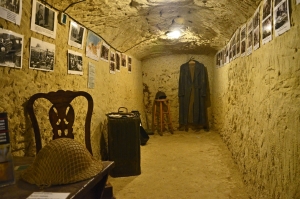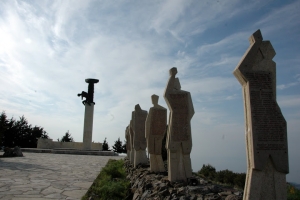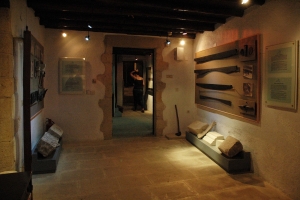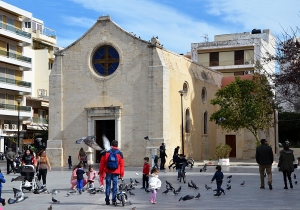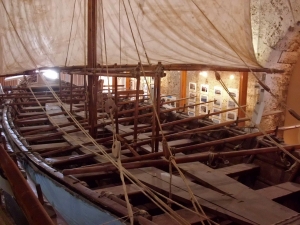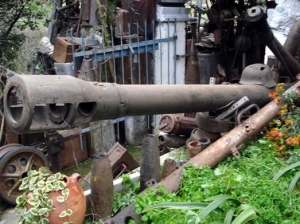A living museum of historical memory that is worth seeing by any visitor of Crete that records the suffering of the Greek people during the German Occupation, is the galleries of Platanias. The shelter was built below the church of Agios Dimitrios at Pano Platanias by the requisitioned locals, for the Germans.
At the entrance of the port of Chania is situated the Venetian Fortress Firkas, where on December 1st 1913, the Greek flag has been hoisted, sealing the union of Crete with the motherland Greece.
The position of Meliana by village Amiras hosts one of the many memorials of the German atrocities experienced by the Cretans during the Second World War and a small museum next to it. This commemorated one of the most violent massacres of German Occupation in Greece, the holocaust of Viannos district.
The museum was founded in 1968 and was officially opened in September 1993. It is housed in a building that is a typical sample of the local architecture and is housed on two floors: the ground floor with a balcony, internal yard, an arched house with auxiliary rooms and a mezzanine.
The Museum of Byzantine Icons and Relics of Archdiocese of Crete is located in the Venetian church of St. Catherine of Sinai, in the center of Heraklion and next to the cathedral of Saint Minas.
When in Chania not forget to visit the docks of the Venetian harbor (Museum of Ancient and Traditional Shipbuilding) the representation of the Minoan ship "Minoa" of 16th-15th century BC that was launched in December 2003 and in 2004 made its maiden trip from Chania to Piraeus
The collection of the Military Museum of Rethymnon at village Chromonastiri includes military uniforms, weapons of different eras in Greek history, medals, historical relics since 1821 and later, an exhibition dedicated to the Macedonian Struggle, library and meeting rooms.
The private museum belongs to Georgios Hatzidakis who met the suffering of the German Occupation.After the war he started with a passion to collect every vestige of the battle to succeed as characteristically telling himself to keep alive the glorious memory of our ancestors and to stimulate younger to deal with their history.











